Perception of Public Policies and Sustainability among Agricultural Producers in the Municipality of Guasave
Abstract
1. Introduction
2. Materials and Methods
2.1. Kolmogorov–Smirnov Test
2.2. Correlation between Variables
3. Results and Discussion
4. Conclusions
Author Contributions
Funding
Institutional Review Board Statement
Informed Consent Statement
Data Availability Statement
Conflicts of Interest
References
- Wu, A.; Elahi, E.; Cao, F.; Yusuf, M.; Abro, M.I. Sustainable Grain Production Growth of Farmland–A Role of Agricultural Socialized Services. Heliyon 2024, 10, e26755. [Google Scholar] [CrossRef]
- Antriyandarti, E.; Suprihatin, D.N.; Pangesti, A.W.; Samputra, P.L. The Dual Role of Women in Food Security and Agriculture in Responding to Climate Change: Empirical Evidence from Rural Java. Environ. Chall. 2024, 14, 100852. [Google Scholar] [CrossRef]
- Granco, G.; Caldas, M.; Bergtold, J.; Heier Stamm, J.L.; Mather, M.; Sanderson, M.; Daniels, M.; Sheshukov, A.; Haukos, D.; Ramsey, S. Local Environment and Individuals’ Beliefs: The Dynamics Shaping Public Support for Sustainability Policy in an Agricultural Landscape. J. Environ. Manag. 2022, 301, 113776. [Google Scholar] [CrossRef]
- Mouysset, L. Agricultural Public Policy: Green or Sustainable? Ecol. Econ. 2014, 102, 15–23. [Google Scholar] [CrossRef][Green Version]
- Bula, A. Importancia de la Agricultura en el Desarrollo Socio-Económico. 2020. Available online: https://observatorio.unr.edu.ar/wp-content/uploads/2020/08/Importancia-de-la-agricultura-en-el-desarrollo-socio-económico.pdf (accessed on 26 November 2022).
- Soloaga, I.; Plassot, T.; Reyes, M. Caracterización de Los Espacios Rurales En México a Partir de Estadísticas Nacionales. Doc. Proy. (LC/TS.2020/130/Rev.1; LC/MEX/TS.2020/32/Rev.1). 2021, pp. 5–45. Available online: https://www.cepal.org/es/publicaciones/46350-caracterizacion-espacios-rurales-mexico-partir-estadisticas-nacionales (accessed on 26 November 2022).
- CIEGSIN Agricultura. Indicadores Por Tema. Available online: http://www.metropol.gov.co/observatorio/Paginas/Indicadores.aspx (accessed on 26 November 2022).
- UANL. ¿Qué Es El Desarrollo Sustentable? Available online: http://sds.uanl.mx/desarrollo_sustentable/ (accessed on 26 November 2022).
- ONU. Informe de La Comisión Mundial Sobre Medio Ambiente y El Desarrollo: Nuestro Futuro Común; ONU: New York, NY, USA, 1987. [Google Scholar]
- Chen, F.; Guo, H.; Ma, P.; Tang, Y.; Wu, F.; Zhu, M.; Zhou, W.; Gao, S.; Lin, H. Sustainable Development of World Cultural Heritage Sites in China Estimated from Optical and SAR Remotely Sensed Data. Remote Sens. Environ. 2023, 298, 113838. [Google Scholar] [CrossRef]
- Pradhan, R.P.; Nair, M.S.; Hall, J.H.; Bennett, S.E. Planetary Health Issues in the Developing World: Dynamics between Transportation Systems, Sustainable Economic Development, and CO2 Emissions. J. Clean. Prod. 2024, 449, 140842. [Google Scholar] [CrossRef]
- IEXE Universidad. ¿Qué Son Las Políticas Públicas? Available online: https://www.iexe.edu.mx/politicas-publicas/que-son-las-politicas-publicas/ (accessed on 26 November 2022).
- CONEVAL. Evaluación de La Política Social. Available online: https://www.coneval.org.mx/Evaluacion/Paginas/Evaluacion.aspx (accessed on 26 November 2022).
- Fusco, G.; Campobasso, F.; Laureti, L.; Frittelli, M.; Valente, D.; Petrosillo, I. The Environmental Impact of Agriculture: An Instrument to Support Public Policy. Ecol. Indic. 2023, 147, 109961. [Google Scholar] [CrossRef]
- Hincapié, S. Global Environmental Governance, Human Rights and Socio-State Capacities in Latin America. Rev. CIDOB d’Afers Int. 2022, 130, 19–45. [Google Scholar] [CrossRef]
- Cuadras Berrelleza, A.A.; Peinado Guevara, V.M.; Peinado Guevara, H.J.; López López, J.d.J.; Barrientos, J.H. Agricultura Intensiva y Calidad de Suelos: Retos Para El Desarrollo Sustentable En Sinaloa. Rev. Mex. Cienc. Agric. 2021, 12, 1401–1414. [Google Scholar] [CrossRef]
- Morales, M.E.; Iocoli, G.A.; Villamil, M.B.; Zabaloy, M.C. Efecto de Los Cultivos de Cobertura Invernales Sobre El Microbioma Del Suelo: Revisión Sistemática de La Literatura. Rev. Argent. Microbiol. 2022, 54, 57–70. [Google Scholar] [CrossRef]
- Gaboardi, S.C.; Candiotto, L.Z.P.; Panis, C. Agribusiness in Brazil and Its Dependence on the Use of Pesticides. Hyg. Environ. Health Adv. 2023, 8, 100080. [Google Scholar] [CrossRef]
- Pinedo-Taco, R.; Borjas-Ventura, R.; Alvarado-Huamán, L.; Castro-Cepero, V.; Julca-Otiniano, A.M. Sustainability of Agricultural Production Systems: A Systematic Review of the Methodologies Used for Their Evaluation. Trop. Subtrop. Agroecosyst. 2021, 24, 1–16. [Google Scholar]
- ONU. Gobernanza Ambiental y La Agenda 2030 Avances y Buenas Prácticas En América; ONU: New York, NY, USA, 2018. [Google Scholar]
- Fox, J.; Haight, L. La Política Agrícola Mexicana: Metas Múltiples e Intereses En Conflicto. In Subsidios para la Desigualdad: Las Políticas Públicas del Maíz en México a Partir del Libre Comercio; COMECSO: Mexico City, Mexico, 2010. [Google Scholar]
- Pérez Soto, F.; Figueroa Hernández, E.; Godínez Montoya, L.; Escamilla García, P.E.; Tavera Cortés, M.E.; Jiménez García, M. Políticas Públicas, Agricultura Familiar y Fortalecimiento Rural, 1st ed.; ASMIIA: Texcoco, México, 2022; ISBN 9786079950989. [Google Scholar]
- Mestiza-Rojas, M.; Vázquez-Toríz, R.; Rappo-Miguez, S. Gobernanza Ambiental y Capital Socialen La Agricultura En Puebla. Una Discusión de Conceptos. Opción Rev. Cienc. Humanas Soc. 2016, 13, 1211–1228. [Google Scholar]
- Araújo, R.G.; Chavez-Santoscoy, R.A.; Parra-Saldívar, R.; Melchor-Martínez, E.M.; Iqbal, H.M.N. Agro-Food Systems and Environment: Sustaining the Unsustainable. Curr. Opin. Environ. Sci. Health 2023, 31, 100413. [Google Scholar] [CrossRef]
- Chirwa, W.; Li, P.; Liu, Y.; Zhang, A.; Zhang, Y. Application of Fine Bubble Technology toward Sustainable Agriculture and Fisheries. J. Clean. Prod. 2024, 141629, in press. [Google Scholar] [CrossRef]
- Hinojosa Benavides, R.A.; Vitor Flores, R.; Gonzales López, J.C.; Quispe Rimachi, Y.; Molina Huailla, R.A.; Ricra Ñaupari, J.T.; Sánchez Montes, E.S.; Quispe de la Cruz, J. Sustentabilidad de Los Sistemas de Producción Agropecuaria. Puriq 2019, 1, 198–207. [Google Scholar] [CrossRef]
- SAGARPA. Planeación Agrícola Nacional 2017–2030. 2017. Available online: https://www.gob.mx/agricultura/acciones-y-programas/planeacion-agricola-nacional-2017-2030-126813 (accessed on 20 October 2023).
- Coronado, Y. Agriculture Systems Dataset in Rural Communities of Hidalgo State, Mexico. Data Brief 2023, 47, 108918. [Google Scholar] [CrossRef] [PubMed]
- Dueñas-Moreno, J.; Vázquez-Tapia, I.; Mora, A.; Cervantes-Avilés, P.; Mahlknecht, J.; Capparelli, M.V.; Kumar, M.; Wang, C. Occurrence, Ecological and Health Risk Assessment of Phthalates in a Polluted Urban River Used for Agricultural Land Irrigation in Central Mexico. Environ. Res. 2024, 240, 117454. [Google Scholar] [CrossRef] [PubMed]
- CEPAL; FAO; IICA. Perspectivas de La Agricultura y Del Desarrollo Rural En Las Américas; Instituto Interamericano de Cooperación para la Agricultura (IICA): San Isidro de Vázquez de Coronado, Costa Rica, 2021; ISBN 9789253073559. [Google Scholar]
- Aguilar, L. El Estudio de Las Políticas Públicas; Miguel Angel Porrúa: Álvaro Obregón, México, 1992. [Google Scholar]
- Lankoski, J.; Thiem, A. Linkages between Agricultural Policies, Productivity and Environmental Sustainability. Ecol. Econ. 2020, 178, 106809. [Google Scholar] [CrossRef]
- Yang, Y.; Huang, S.; Wang, C. Public Policies in Support of Organic Agriculture in China. In Organic Agriculture and Biodiversity in China; Elsevier: Amsterdam, The Netherlands, 2024; pp. 65–81. [Google Scholar]
- Ávila-Foucat, V.S. Desafíos Del Sector Primario y Políticas Públicas Sustentables. Econ. Inf. 2017, 402, 29–39. [Google Scholar] [CrossRef]
- Alonso, R.S.; Sittón-Candanedo, I.; García, Ó.; Prieto, J.; Rodríguez-González, S. An Intelligent Edge-IoT Platform for Monitoring Livestock and Crops in a Dairy Farming Scenario. Ad Hoc Netw. 2020, 98, 102047. [Google Scholar] [CrossRef]
- Nova, P.; Pinto, E.; Chaves, B.; Silva, M. Urban Organic Community Gardening to Promote Environmental Sustainability Practices and Increase Fruit, Vegetables and Organic Food Consumption. Gac. Sanit. 2020, 34, 4–9. [Google Scholar] [CrossRef] [PubMed]
- de López Barron, T.J. Políticas Públicas y El Estado de Bienestar Como Divisa Del Gobierno Actual. Derecho Opin. Ciudad. 2021, 10, 27–59. [Google Scholar]
- Yang, J.; Ma, R.; Yang, L. Spatio-Temporal Evolution and Its Policy Influencing Factors of Agricultural Land-Use Efficiency under Carbon Emission Constraint in Mainland China. Heliyon 2024, 10, e25816. [Google Scholar] [CrossRef]
- Ngo, L.N.; Tran, T.Q. Gender Equity in Key Agricultural Policy Documents in Cambodia and Vietnam from 2001 to 2021. Soc. Sci. Humanit. Open 2024, 9, 100830. [Google Scholar] [CrossRef]
- Kam, H.; Smith, H.; Potter, C. Public Money for Public Goods: The Role of Ideas in Driving Agriculture Policy in the EU and Post-Brexit UK. Land Use Policy 2023, 129, 106618. [Google Scholar] [CrossRef]
- Matchaya, G.C. Public Spending on Agriculture in Southern Africa: Sectoral and Intra-Sectoral Impact and Policy Implications. J. Policy Model. 2020, 42, 1228–1247. [Google Scholar] [CrossRef]
- Herrera Tapia, F. Enfoques y Políticas de Desarrollo Rural En México: Una Revisión de Su Construcción Institucional. Gestión Política Pública 2013, 22, 131–159. [Google Scholar]
- CONEVAL. Evaluación Integral de Las Políticas de Fomento y Desarrollo Del Sector Social de La Economía; CONEVAL: Ciudad de México, Mexico, 2018. [Google Scholar]
- Memmedova, K.; Ertuna, B. Development of a Fuzzy Likert Scales to Measure Variables in Social Sciences. Inf. Sci. 2024, 654, 119792. [Google Scholar] [CrossRef]
- Magdolen, M.; von Behren, S.; Vallée, J.; Chlond, B.; Vortisch, P. Response Bias in Likert-Style Psychological Items—An Example from a Large-Scale Travel Survey in China. Transp. Res. Procedia 2024, 76, 349–360. [Google Scholar] [CrossRef]
- Bacco, M.; Barsocchi, P.; Ferro, E.; Gotta, A.; Ruggeri, M. The Digitisation of Agriculture: A Survey of Research Activities on Smart Farming. Array 2019, 3–4, 100009. [Google Scholar] [CrossRef]
- Yacoubou Djima, I.; Kilic, T. Attenuating Measurement Errors in Agricultural Productivity Analysis by Combining Objective and Self-Reported Survey Data. J. Dev. Econ. 2024, 168, 103249. [Google Scholar] [CrossRef]
- Sha, Z.; Ren, D.; Li, C.; Wang, Z. Agricultural Subsidies on Common Prosperity: Evidence from the Chinese Social Survey. Int. Rev. Econ. Financ. 2024, 91, 1–18. [Google Scholar] [CrossRef]
- Adzawla, W.; Setsoafia, E.D.; Setsoafia, E.D.; Amoabeng-Nimako, S.; Atakora, W.K.; Bindraban, P.D. Accuracy of Agricultural Data and Implications for Policy: Evidence from Maize Farmer Recall Surveys and Crop Cuts in the Guinea Savannah Zone of Ghana. Agric. Syst. 2024, 214, 103817. [Google Scholar] [CrossRef]
- Arias, F. El Proyecto de Investigación. In Introducción a La Metodología Científica, 6th ed.; Episteme, Ed.; Universidad Internacional de La Rioja: Caracas, Venezuela, 2012; ISBN 9800785299. [Google Scholar]
- Hernández, R.; Mendoza, C. Metodologia de La Investigación: Las Rutas Cuantativa, Cualitativa y Mixta; Editorial Mc Graw Hill Education: Ciudad de México, México, 2018; ISBN 978-1-4562-6096-5. [Google Scholar]
- Gobierno de México. Producción Para El Bienestar. Available online: https://programasparaelbienestar.gob.mx/produccion-para-el-bienestar/ (accessed on 18 March 2024).
- Torres, M.; Paz, K.; Salazar, F. Tamaño de Una Muestra Para Una Investigación de Mercado. Bol. Electrón. 2006, 2, 1–13. [Google Scholar]
- Reus-González, N.N.; Reus-González, T.; Macías-ocampo, M.J.; Castro-López, E. Banking Cards on Students of Bachelor’s Degree in Law in Personal Finance Management. Am. J. Humanit. Soc. Sci. Res. 2021, 5, 579–586. [Google Scholar]
- Gaibor, J.; Bravo, E.; Fierro, M. Percepción de La Salud Por Parte de Los Agricultores En Zonas de Producción Agrícolas Dedicadas Al Monocultivo de Maíz Duro. Caso Cantón Ventanas, Provincia de Los Ríos-Ecuador. Yachana 2017, 6, 25–36. [Google Scholar]
- Sánchez-Toledano, B.I.; Kallas, Z.; Gil, J.M. Importancia de Los Objetivos Sociales, Ambientales y Económicos de Los Agricultores En La Adopción de Maíz Mejorado En Chiapas, México. Rev. De La Fac. De Cienc. Agrar. 2017, 49, 269–287. [Google Scholar]
- Hernández-Perlines, F.; Sánchez-Infantes, J.P. Análisis Del Efecto de La Responsabilidad Social Empresarial En Los Resultados Empresariales de Las Micro, Pequeñas y Medianas Empresas (MIPYMEs). J. Glob. Compet. Governability 2016, 10, 110–123. [Google Scholar] [CrossRef]
- Pita-Moreno, Y.X.; Botia-Rodríguez, B.Y.; Fonseca-Carreño, J.A. Caracterización y Tipificación de Los Atributos Ecosistémicos de La Agricultura Familiar Campesina En La Microcuenca Del Rio Cormechoque (Boyacá). Rev. Investig. Agrar. Ambient. 2018, 9, 49–62. [Google Scholar]
- Clavijo-Cabrera, O.; Morantes-Daza, R. Evaluación Productividad Del Ensilaje de Maíz (Zea-Mays) Para La Alimentación Bovina Empleando Agricultura de Precisión. Nova 2016, 2, 66–75. [Google Scholar]
- Castelao Caruana, M.E. Las Políticas Públicas y Su Visión de La Economía Social y Solidaria En Argentina. Rev. Mex. Cienc. Polit. Soc. 2016, 61, 349–378. [Google Scholar] [CrossRef]
- Gómez Oliver, L.; Tacuba Santos, A. La Política de Desarrollo Rural En México. ¿Existe Correspondencia Entre Lo Formal y Lo Real? Econ. UNAM 2017, 14, 93–117. [Google Scholar] [CrossRef]
- González-Gaudiano, E.J.; Meira-Cartea, P.A.; Martínez-Fernández, C.N. Sustentabilidad y Universidad: Retos, Ritos y Posibles Rutas. Rev. La Educ. Super. 2015, 44, 69–93. [Google Scholar] [CrossRef]
- Chucho-Cuvi, A.; Andrade-Bayona, C. Propiedades de Validez Del Constructo de Los Inventarios de Ansiedad y Depresión de Beck En Adolescentes Cañaris Kichwa-Hablantes Del Ecuador. S. Am. Res. J. 2023, 3, 59–65. [Google Scholar]
- Sanchez-Escobedo, P. Diseño y Desarrollo de Instrumentos En Línea; Centro de Estudios, Clínica e Investigación Psicoanalítica S.C.: Merida, México, 2022; ISBN 9786079932923. [Google Scholar]
- Rajbahadur, G.K.; Wang, S.; Oliva, G.A.; Kamei, Y.; Hassan, A.E. The Impact of Feature Importance Methods on the Interpretation of Defect Classifiers. IEEE Trans. Softw. Eng. 2022, 48, 2245–2261. [Google Scholar] [CrossRef]
- Dumbrell, N.P.; Wheeler, S.A.; Zuo, A.; Adamson, D. Comparing Australian Public and Farmer Views on Agricultural Land Use and Management Practices for Sustainability. Ecol. Econ. 2024, 219, 108149. [Google Scholar] [CrossRef]
- Swart, R.; Levers, C.; Davis, J.T.M.; Verburg, P.H. Meta-Analyses Reveal the Importance of Socio-Psychological Factors for Farmers’ Adoption of Sustainable Agricultural Practices. One Earth 2023, 6, 1771–1783. [Google Scholar] [CrossRef]
- Gavito, M.E.; van der Wal, H.; Aldasoro, E.M.; Ayala-Orozco, B.; Bullén, A.A.; Cach-Pérez, M.; Casas-Fernández, A.; Fuentes, A.; González-Esquivel, C.; Jaramillo-López, P.; et al. Ecología, Tecnología e Innovación Para La Sustentabilidad: Retos y Perspectivas En México. Rev. Mex. Biodivers. 2017, 88, 150–160. [Google Scholar] [CrossRef]
- Vázquez-Trejo, I.; Ramírez-García, A.G.; Cuevas-Reyes, V.; Pérez-Villalba, E.; Cruz-Cruz, E. Desarrollo, Estado y Las Políticas Públicas Orientadas Al Medio Rural Mexicano (1934–2020). Ra Ximhai 2022, 18, 17–37. [Google Scholar] [CrossRef]
- de Brito, A.S.L.; Junior, A.C.; Morais, M.A.; Sampaio, J.L.F.; Hernandez-Romero, O. Importancia de La Educación Del Campo y Del Saber Campesino En Fortaleza, Ceará, Brasil. Agroproductividad 2018, 11, 129–135. [Google Scholar]
- Flores Núñez, A.; Enríquez García, F. Educación Del México Rural y El Enfoque Autogestivo. Rev. Biológico Agropecu. Tuxpan 2023, 11, 29–44. [Google Scholar] [CrossRef]
- Cámara de Diputados; CEDRSSA. Políticas Públicas, Su Campo Conceptual Para El Desarrollo Rural En México; CEDRSSA: Ciudad de Mexico, Mexico, 2016. [Google Scholar]
- Anser, M.K.; Yousaf, S.U.; Usman, B.; Azam, K.; Bandar, N.F.A.; Jambari, H.; Sriyanto, S.; Zaman, K. Beyond Climate Change: Examining the Role of Environmental Justice, Agricultural Mechanization, and Social Expenditures in Alleviating Rural Poverty. Sustain. Futures 2023, 6, 100130. [Google Scholar] [CrossRef]
- Huang, Y.; Gan, J.; Liu, B.; Zhao, K. Environmental Policy and Green Development in Urban and Rural Construction: Beggar-Thy-Neighbor or Win-Win Situation? J. Clean. Prod. 2024, 446, 141201. [Google Scholar] [CrossRef]
- Soares, P.; Secci Martinelli, S.; Barletto Cavalli, S.; Davó-Blanes, M.C. Propuesta Metodológica Para Explorar La Compra de Alimentos Saludables y Sostenibles En Servicios de Alimentación. Gac. Sanit. 2021, 35, 204–207. [Google Scholar] [CrossRef]
- Ruíz Rivera, N.; Galicia Sarmiento, L. La Escala Geográfica Como Concepto Integrador En La Comprensión de Problemas Socio-Ambientales. Investig. Geogr. 2016, 89, 137. [Google Scholar] [CrossRef]
- Bagheri, A.; Taghvaeian, S.; Delen, D. A Text Analytics Model for Agricultural Knowledge Discovery and Sustainable Food Production: A Case Study from Oklahoma Panhandle. Decis. Anal. J. 2023, 9, 100350. [Google Scholar] [CrossRef]
- Aghaloo, K.; Sharifi, A. A GIS-Based Agroecological Model for Sustainable Agricultural Production in Arid and Semi-Arid Areas: The Case of Kerman Province, Iran. Curr. Res. Environ. Sustain. 2023, 6, 100230. [Google Scholar] [CrossRef]
- Cruz Delgado, D.; Leos Rodríguez, J.A. The Production of Corn in Sinaloa, Mexico and Its Implications for the Environment. Let. Verdes. Rev. Latinoam. Estud. Socioambientales 2019, 25, 100–118. [Google Scholar] [CrossRef]
- de Sinaloa, H.C. Persiste En México Uso de Plaguicidas Con Componentes Prohibidos. Available online: https://www.congresosinaloa.gob.mx/comunicados/persiste-en-mexico-uso-de-plaguicidas-con-componentes-prohibidos-martinez-valenzuela/ (accessed on 28 June 2022).
- Moreno-Higareda, C. Uso de Agroquímicos y Riego Excesivo Han Degradado El Suelo de Sinaloa. Available online: https://dcs.uas.edu.mx/noticias/4175/uso-de-agroquimicos-y-riego-excesivo-han-degradado-el-suelo-de-sinaloa (accessed on 28 June 2022).
- Priya, A.K.; Alagumalai, A.; Balaji, D.; Song, H. Bio-Based Agricultural Products: A Sustainable Alternative to Agrochemicals for Promoting a Circular Economy. RSC Sustain. 2023, 1, 746–762. [Google Scholar] [CrossRef]
- Singh, J.; Singh, B. Vishavnath Design of Innovative Agrochemical Delivery System for Sustainable Agriculture and to Alleviate Environmental and Health Hazards. Sustain. Chem. Environ. 2023, 4, 100046. [Google Scholar] [CrossRef]
- Mubeen, I.; Fawzi Bani Mfarrej, M.; Razaq, Z.; Iqbal, S.; Naqvi, S.A.H.; Hakim, F.; Mosa, W.F.A.; Moustafa, M.; Fang, Y.; Li, B. Nanopesticides in Comparison with Agrochemicals: Outlook and Future Prospects for Sustainable Agriculture. Plant Physiol. Biochem. 2023, 198, 107670. [Google Scholar] [CrossRef] [PubMed]
- Rogers, S.; Wang, Z.J.-H.; He, J. Farmers’ Practices and the Political Ecology of Agrochemicals in Rural China. Geoforum 2023, 141, 103751. [Google Scholar] [CrossRef]
- Valbuena, D.; Cely-Santos, M.; Obregón, D. Agrochemical Pesticide Production, Trade, and Hazard: Narrowing the Information Gap in Colombia. J. Environ. Manag. 2021, 286, 112141. [Google Scholar] [CrossRef]
- Sharma, B.; Lakra, U.; Sharma, R.; Sharma, S.R. A Comprehensive Review on Nanopesticides and Nanofertilizers—A Boon for Agriculture. In Nano-Enabled Agrochemicals in Agriculture; Elsevier: Amsterdam, The Netherlands, 2022; pp. 273–290. [Google Scholar]
- Yu, L.; Liu, S.; Wang, F.; Liu, Y.; Li, M.; Wang, Q.; Dong, S.; Zhao, W.; Tran, L.-S.P.; Sun, Y.; et al. Effects of Agricultural Activities on Energy-Carbon-Water Nexus of the Qinghai-Tibet Plateau. J. Clean. Prod. 2022, 331, 129995. [Google Scholar] [CrossRef]
- Singh, N.K.; Sanghvi, G.; Yadav, M.; Padhiyar, H.; Christian, J.; Singh, V. Fate of Pesticides in Agricultural Runoff Treatment Systems: Occurrence, Impacts and Technological Progress. Environ. Res. 2023, 237, 117100. [Google Scholar] [CrossRef]
- Ibarra Ceceña, M.G.; López de Haro, P.A. Perception on the Use of Agrochemicals and Their Effects on the Health of the Inhabitants of Jahuara Ii, El Fuerte, Sinaloa, Mexico. Conjeturas Sociol. 2021, 9, 77–95. [Google Scholar]
- Mancera González, O. Las Codependencias de La Agroindustria En Sinaloa, México. Perfiles Latinoam. 2023, 31, 1–28. [Google Scholar] [CrossRef]
- Mulimbi, W.; Brye, K.R.; Nalley, L.L.; Birindwa, D.R. Conservation Agriculture Assists Smallholder Farmers and Their Agroecosystem in the Democratic Republic of the Congo. Agric. Ecosyst. Environ. 2023, 355, 108597. [Google Scholar] [CrossRef]
- Kolapo, A.; Kolapo, A.J. Implementation of Conservation Agricultural Practices as an Effective Response to Mitigate Climate Change Impact and Boost Crop Productivity in Nigeria. J. Agric. Food Res. 2023, 12, 100557. [Google Scholar] [CrossRef]
- Gobierno de México. El Reto: Una Agricultura Sustentable, Productiva e Inclusiva|Secretaría de Agricultura y Desarrollo Rural|Gobierno|Gob.Mx. Available online: https://www.gob.mx/agricultura/articulos/agricultura-sustentable-una-buena-practica-social (accessed on 25 May 2022).
- Zepeda, I. Manejo Sustentable de Plagas Agricolas En Mexico. Agric. Soc. Desarro. 2018, 15, 99–108. [Google Scholar] [CrossRef]
- Trujillo-Díaz, I.E. Biotecnología y Desarrollo Sostenible: Quimera o Realidad. In Agricultura Sostenible como Base para los Agronegocios; SOMAS A.C.: San Luis Potosi, México, 2017; pp. 43–48. ISBN 9788490225370. [Google Scholar]
- Gobierno de Perú; INIA; SENASA, I. Manual de Buenas Prácticas Agrícolas Para El Cultivo Del Cacao; IICA: Lima, Peru, 2022; ISBN 9789292489687. [Google Scholar]
- Díaz, A.; Gebler, L.; Maia, L.; Medina, L.; Trelles, S. Buenas Prácticas Agrícolas Para Una Agricultura Más Resiliente; IICA, Ed.; IICA: San José, Costa Rica, 2017; ISBN 9789292486976. [Google Scholar]
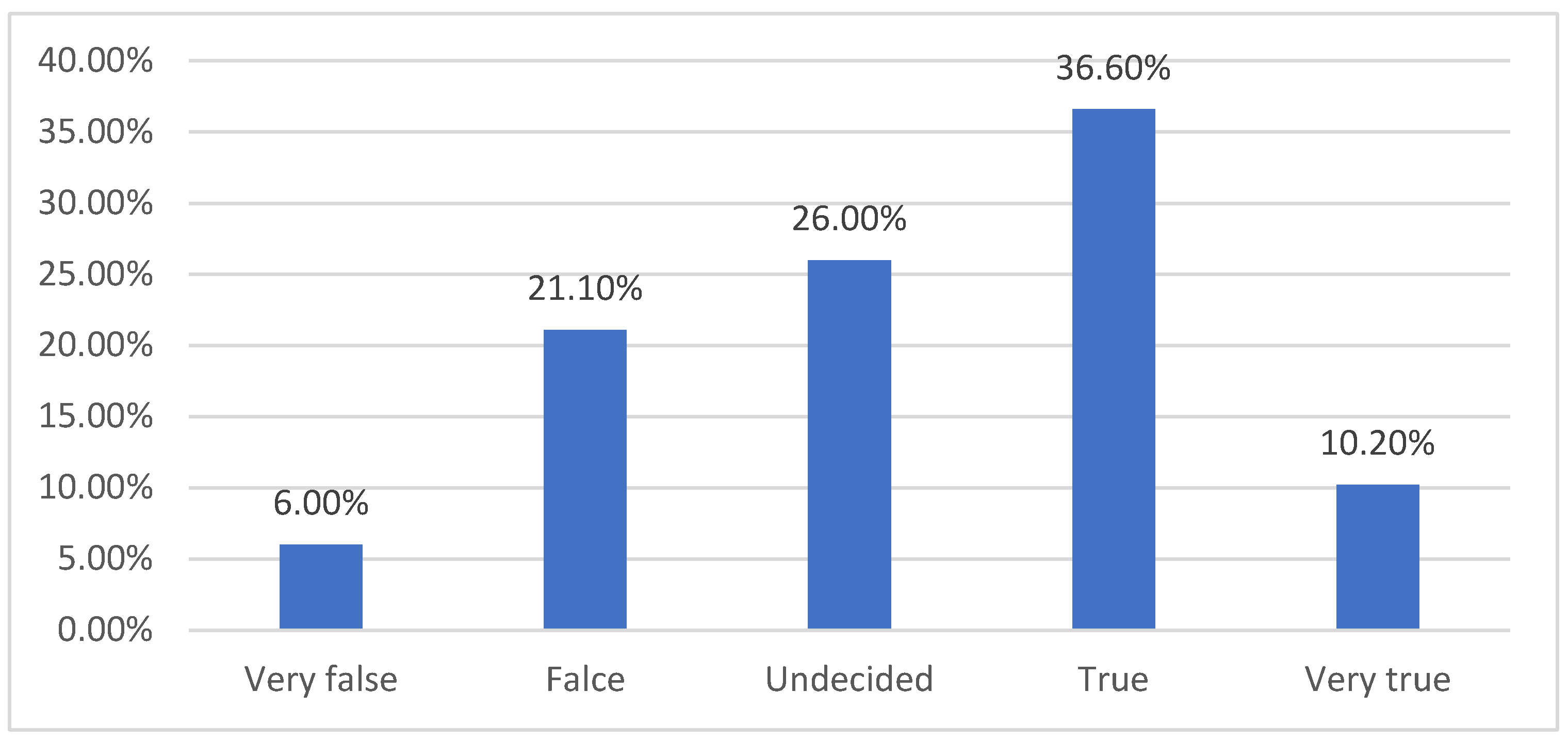


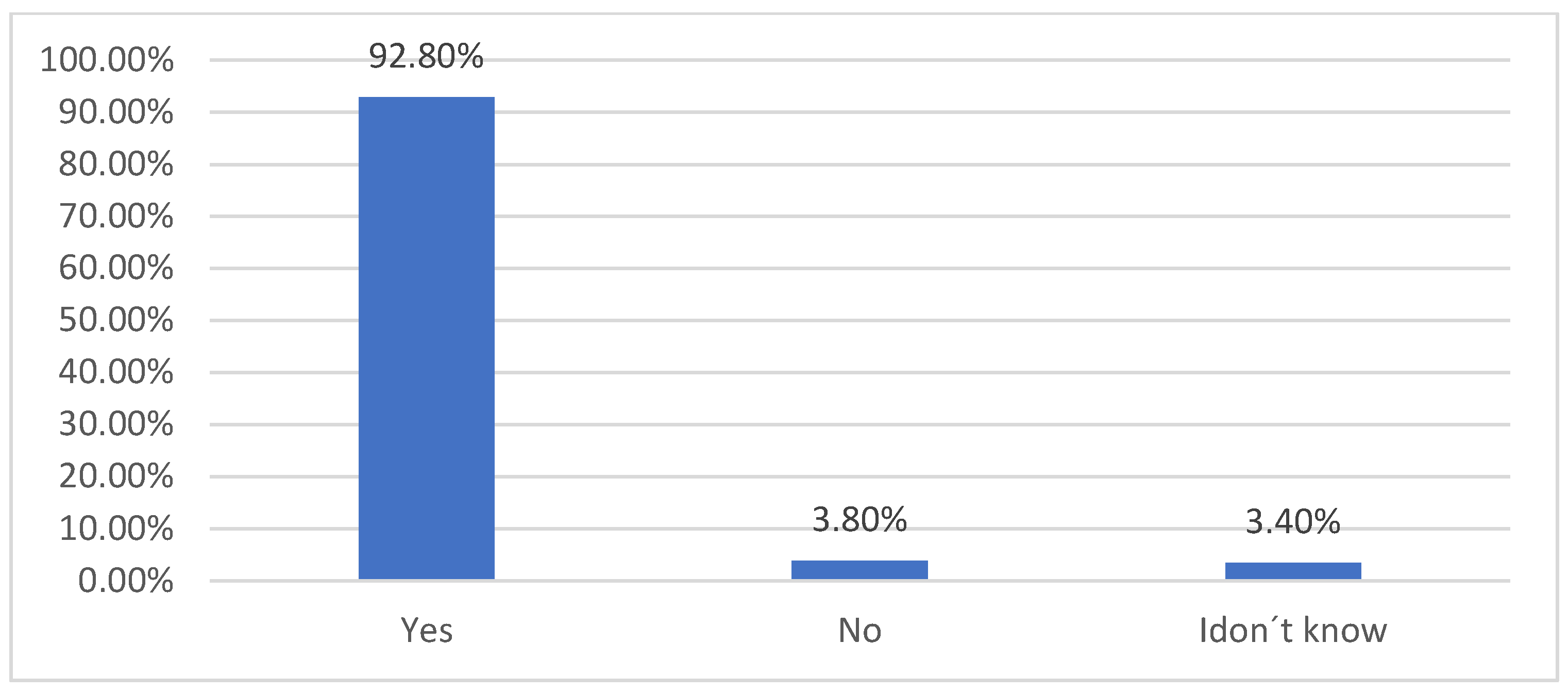
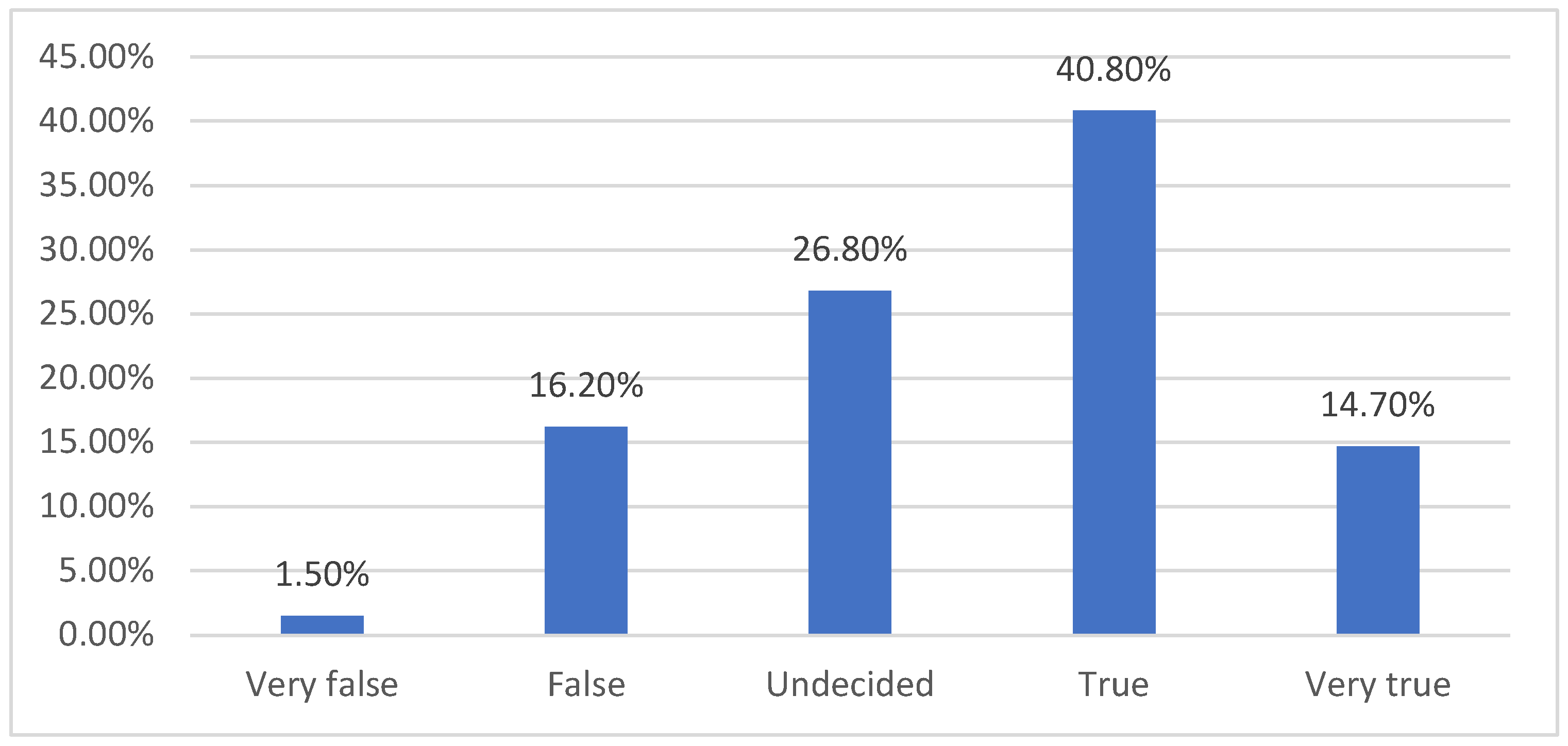
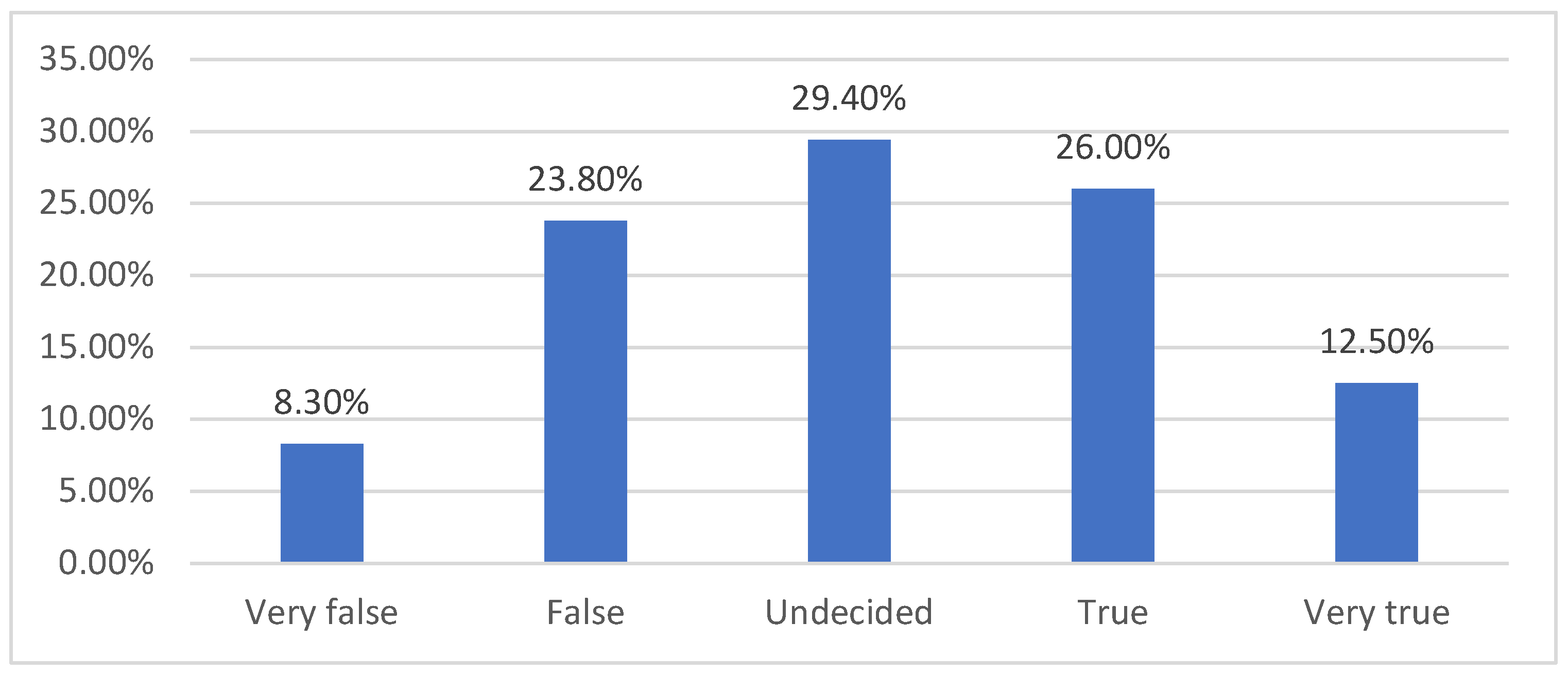
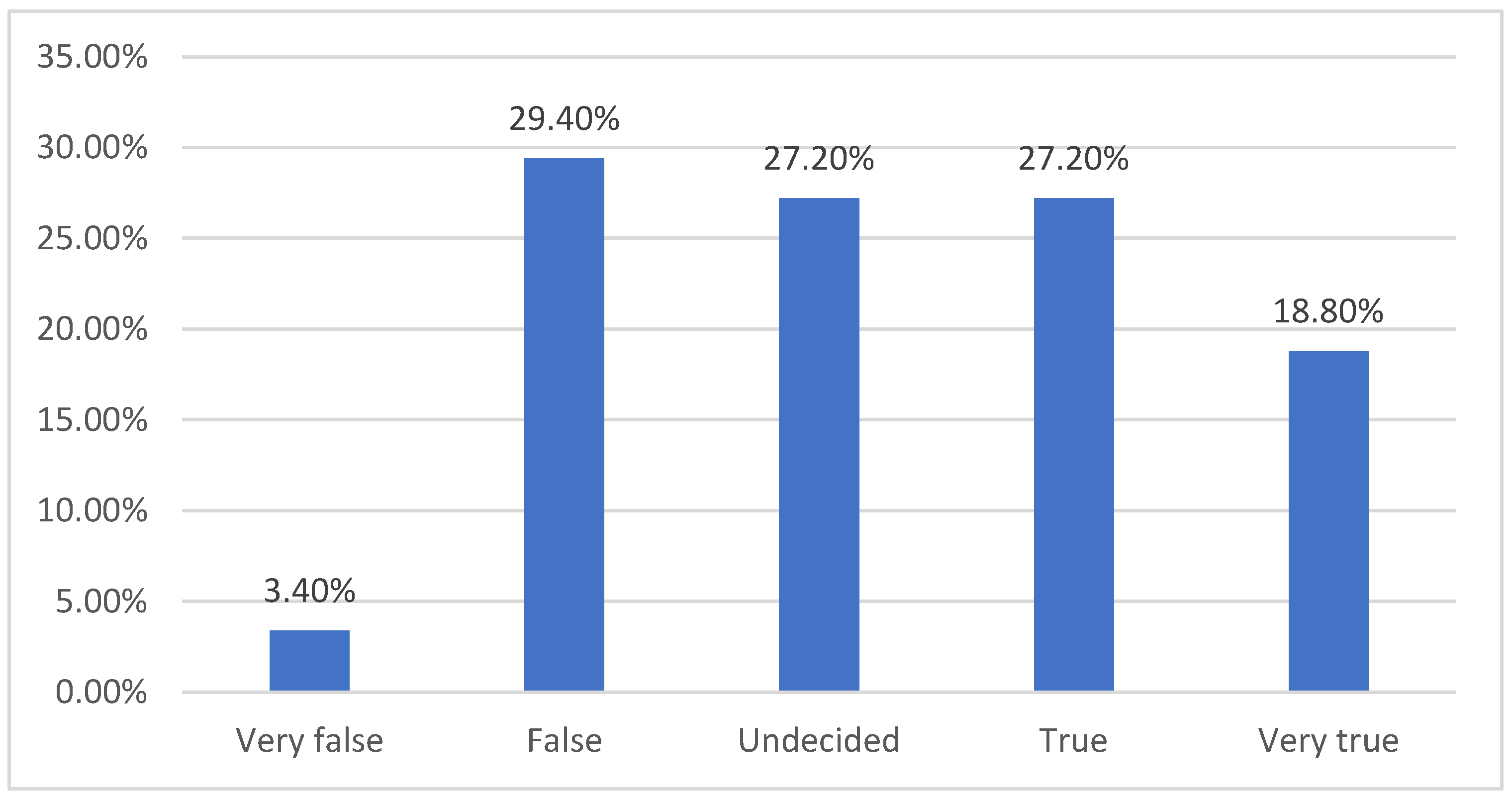
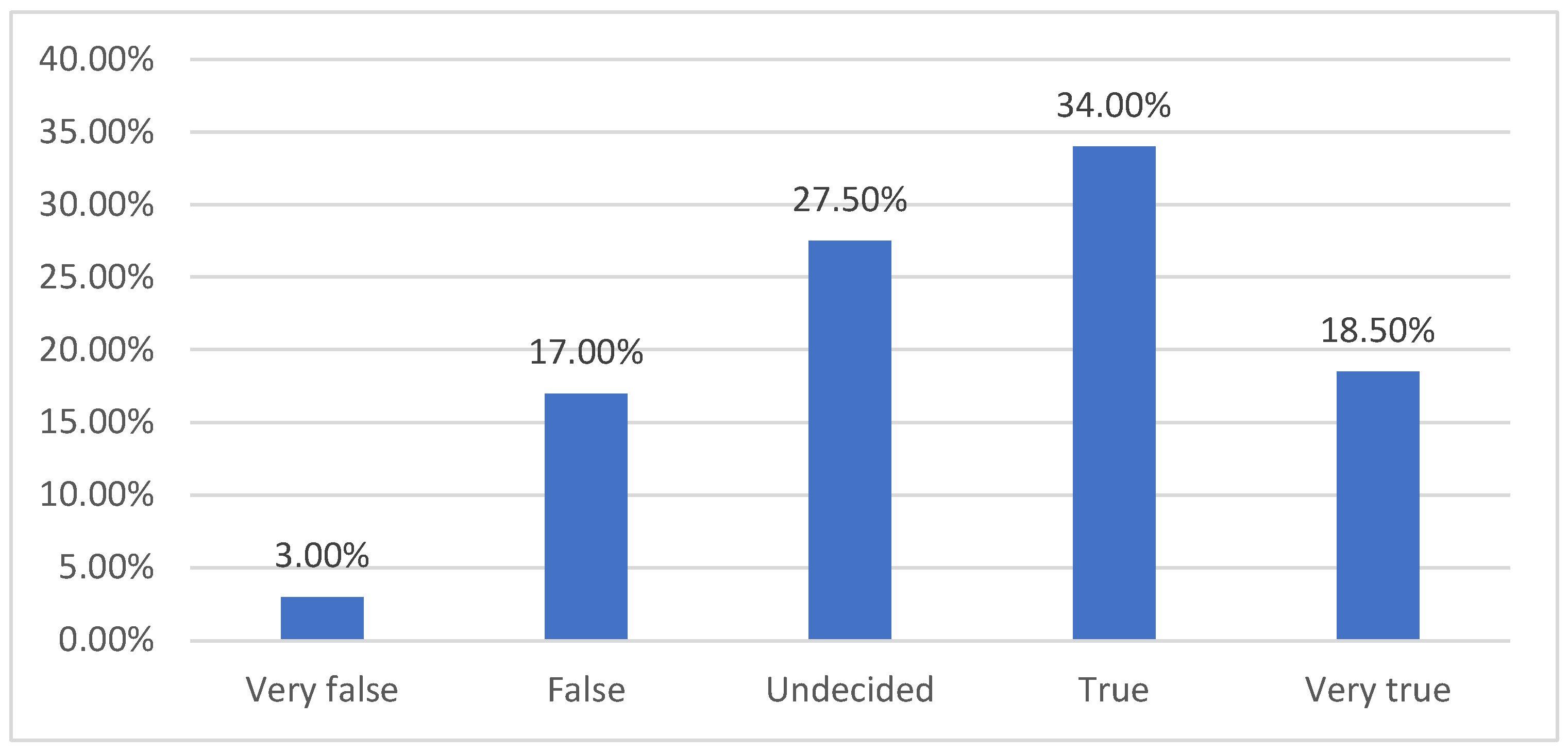
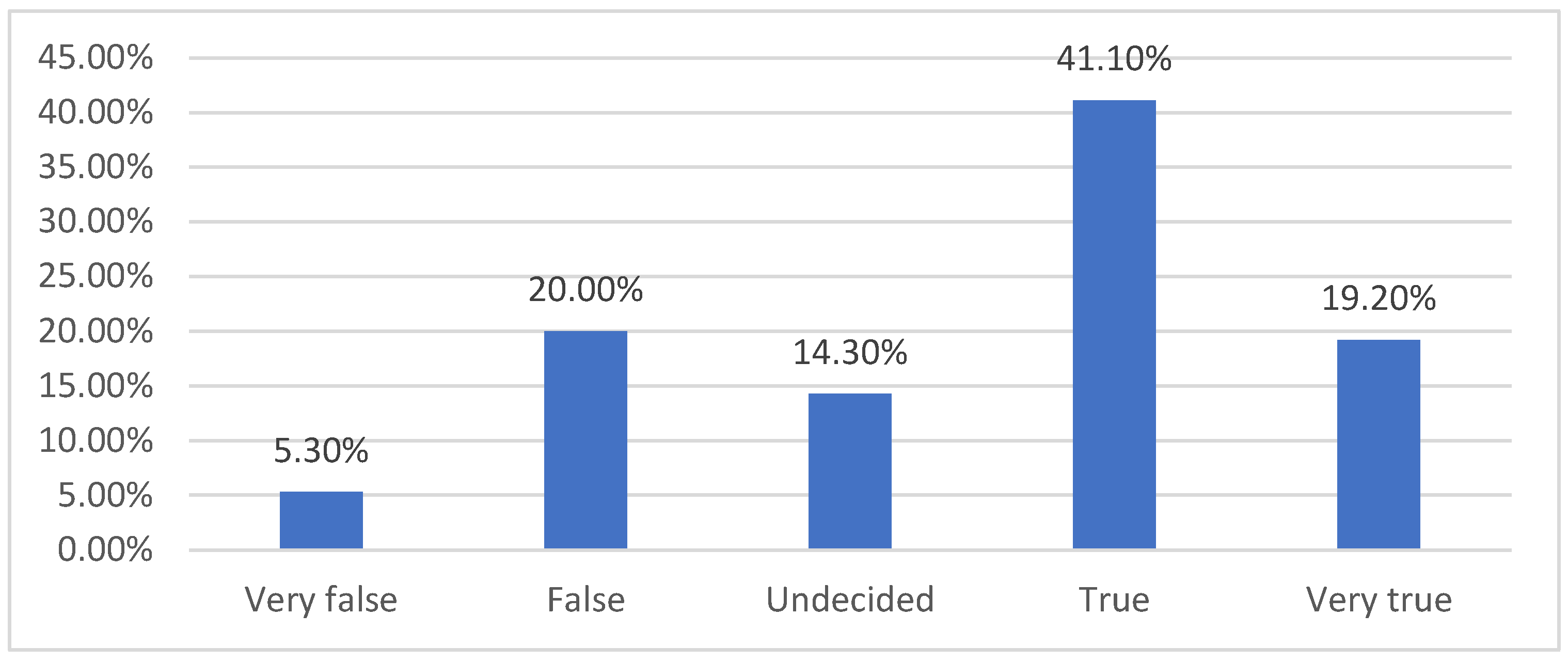
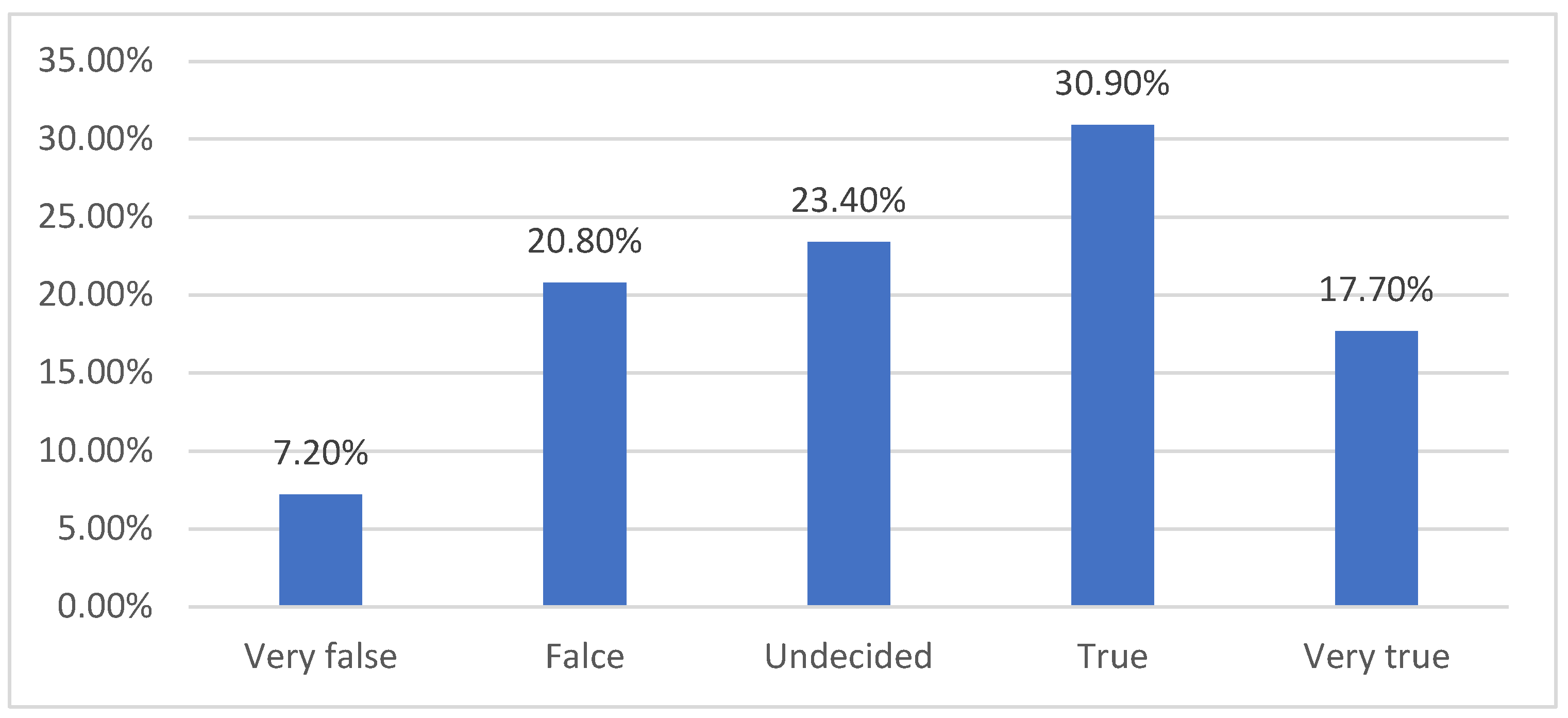
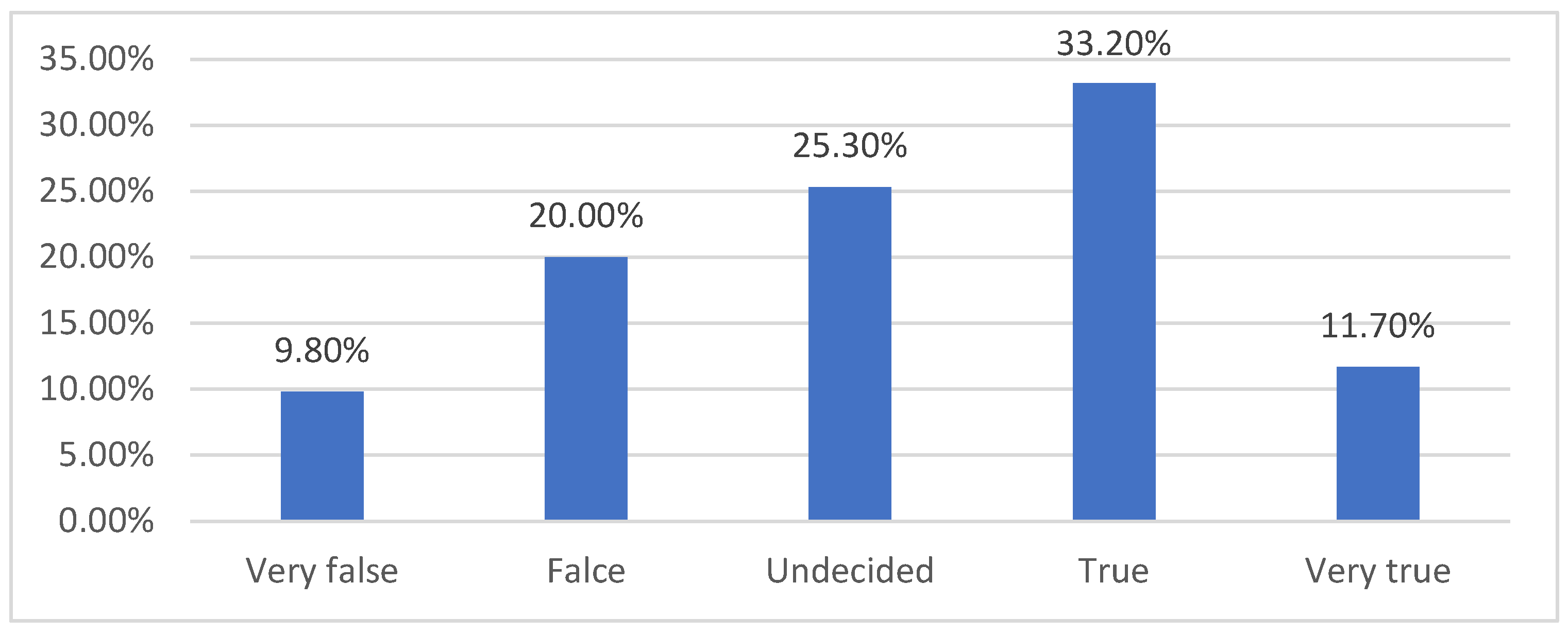
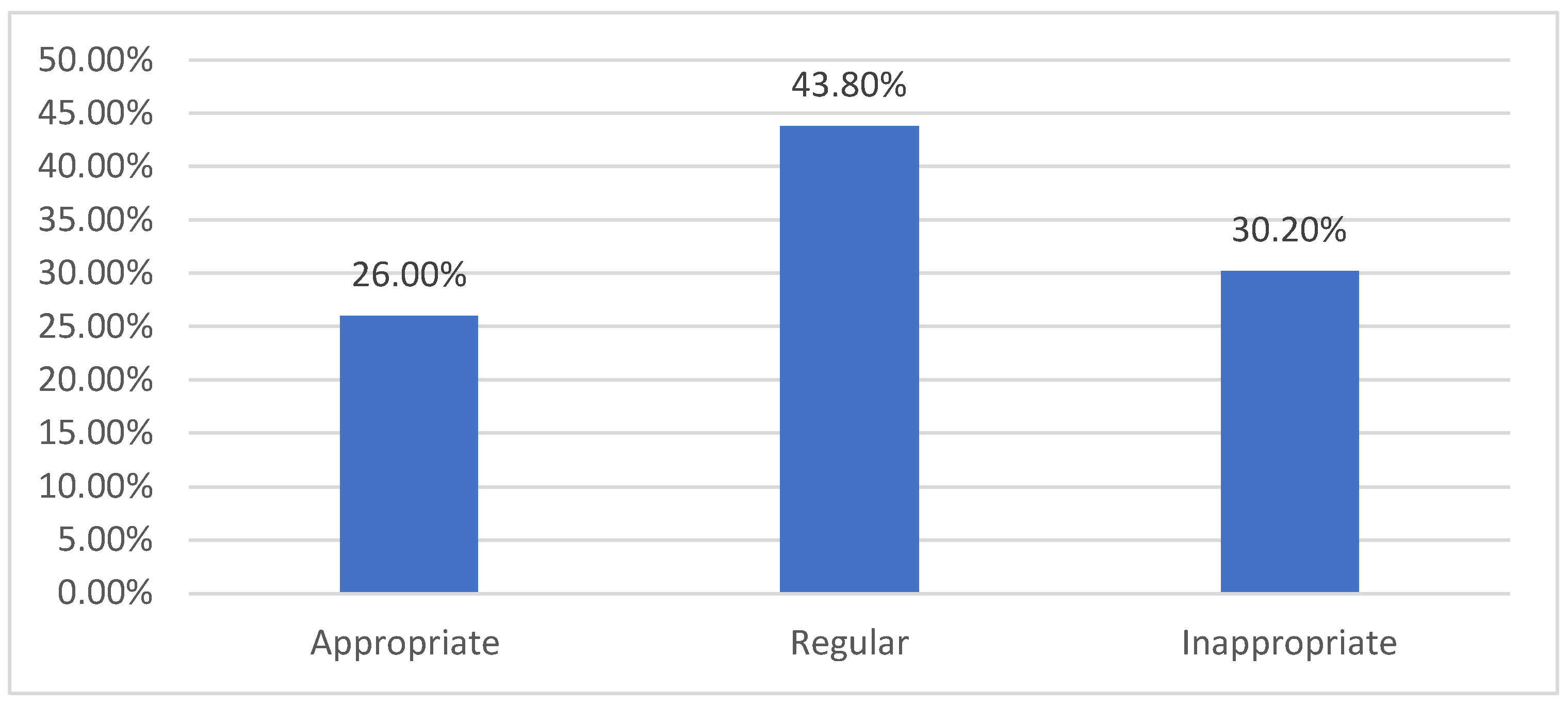

| Num. | Items | Subcategory to Which It Belongs |
|---|---|---|
| 1 | Monitoring of agricultural activity. | 1 |
| 2 | Government involvement in the design of a sustainable public agricultural policy. | 2 |
| 3 | Collaborative work between government and farmers in designing public policy | 2 |
| 4 | Agricultural public policies and sustainability in recent years | 2 |
| 5 | Monitoring the use of agrochemicals | 1 |
| 6 | Government promotes the use of agrochemicals | 1 |
| 7 | Government bans use of environmentally harmful agrochemicals | 1 |
| 8 | Government promotes monocultures | 1 |
| 9 | Government promotes conservation agriculture | 1 |
| 10 | Government oversees proper use of water in agricultural irrigation | 1 |
| 11 | Government runs programs to promote appropriate agricultural practices | 2 |
| 12 | The government creates and promotes good agricultural practice manuals | 1 |
| 13 | Government involvement in agri-environmental issues | 1 |
| No. | Dimensions addressed | |
| 1 | Governance and agricultural sustainability | |
| 2 | Public policies in agriculture |
| Scale Reliability Statistics | |
|---|---|
| Estimated | McDonald |
| Estimated point | 0.866 |
| 95% Cl lower limit | 0.845 |
| 95% Cl upper limit | 0.892 |
| Note: Complete pairwise cases were used from the observations. | |
| Kolmogorov–Smirnov | ||
|---|---|---|
| Statistician | Sig. | |
| Public policies and sustainable development | 0.248 | 0.000 |
| Governance and agricultural sustainability | 0.272 | 0.000 |
| Public policies in agriculture | 0.246 | 0.000 |
| Category | Subcategory | Value Correlation | Level of Correlation | Significance Level |
|---|---|---|---|---|
| Public policies and sustainable development | Agricultural governance and sustainability | 0.807 | Strong | 0.000 |
| Public policies in agriculture | 0.727 | Strong | 0.000 |
Disclaimer/Publisher’s Note: The statements, opinions and data contained in all publications are solely those of the individual author(s) and contributor(s) and not of MDPI and/or the editor(s). MDPI and/or the editor(s) disclaim responsibility for any injury to people or property resulting from any ideas, methods, instructions or products referred to in the content. |
© 2024 by the authors. Licensee MDPI, Basel, Switzerland. This article is an open access article distributed under the terms and conditions of the Creative Commons Attribution (CC BY) license (https://creativecommons.org/licenses/by/4.0/).
Share and Cite
Cuadras-Berrelleza, A.A.; Peinado-Guevara, H.J.; Moreno-López, E.O.; Beltrán-Lúgo, L.; Peinado-Guevara, V.M. Perception of Public Policies and Sustainability among Agricultural Producers in the Municipality of Guasave. Sustainability 2024, 16, 2678. https://doi.org/10.3390/su16072678
Cuadras-Berrelleza AA, Peinado-Guevara HJ, Moreno-López EO, Beltrán-Lúgo L, Peinado-Guevara VM. Perception of Public Policies and Sustainability among Agricultural Producers in the Municipality of Guasave. Sustainability. 2024; 16(7):2678. https://doi.org/10.3390/su16072678
Chicago/Turabian StyleCuadras-Berrelleza, Aldo Alan, Héctor José Peinado-Guevara, Esteban Otoniel Moreno-López, Lizbeth Beltrán-Lúgo, and Víctor Manuel Peinado-Guevara. 2024. "Perception of Public Policies and Sustainability among Agricultural Producers in the Municipality of Guasave" Sustainability 16, no. 7: 2678. https://doi.org/10.3390/su16072678
APA StyleCuadras-Berrelleza, A. A., Peinado-Guevara, H. J., Moreno-López, E. O., Beltrán-Lúgo, L., & Peinado-Guevara, V. M. (2024). Perception of Public Policies and Sustainability among Agricultural Producers in the Municipality of Guasave. Sustainability, 16(7), 2678. https://doi.org/10.3390/su16072678







